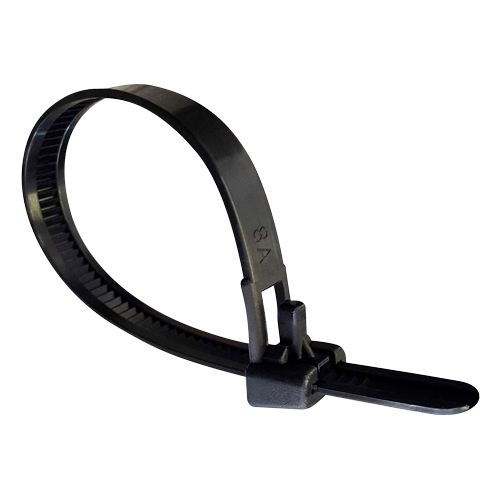Winter sports enthusiasts often face the challenge of transporting bulky gear safely. Tying down car roof racks is essential for securing items like skis, snowboards, and sleds during transit.
In this guide, we'll explore how to use cable ties to effectively tie down car roof racks for your winter sports equipment. With the right approach, you can ensure your gear arrives at your destination intact.
Why Properly Securing Your Roof Rack Matters
Transporting winter sports gear can be risky if not properly secured. Unsecured equipment poses safety hazards to you and other drivers.
Moreover, improper fastening may result in damage to your gear. Therefore, understanding how to tie down car roof racks is crucial.
Choosing the Right Cable Ties for Winter Gear
Selecting suitable cable ties ensures your equipment stays in place. Heavy-duty, weather-resistant cable ties are ideal for winter conditions.
Additionally, consider the length and tensile strength of the ties. They should be long enough to wrap around your gear and sturdy enough to hold it securely.
Step-by-Step Guide to Tying Down Car Roof Racks
Step 1: Prepare Your Roof Rack and Equipment
First, inspect your roof rack for any damage or loose parts. Tighten all bolts and ensure the rack is clean.
Next, gather your winter sports gear and organize it for easy loading. This preparation simplifies the tying down process.
Step 2: Position Your Winter Sports Gear
Place your skis, snowboards, or sleds on the roof rack. Arrange them so they are balanced and do not overhang excessively.
It's important to align the gear with the vehicle's length. This reduces wind resistance and enhances stability during travel.
Step 3: Secure Gear with Cable Ties
Begin by looping a cable tie around the gear and roof rack crossbars. Pull the tie tight to hold the equipment firmly.
Repeat this process at multiple points along the gear. Using several cable ties distributes the load and increases security.
Tips for Safe Transportation
 When transporting items, ensuring safety is paramount. Always inspect your cable ties to confirm they are securely fastened before starting your journey. Loose ties can fail under pressure, which may cause items to shift or fall during transit. This could lead to damage or accidents, putting your safety and that of others at risk.
When transporting items, ensuring safety is paramount. Always inspect your cable ties to confirm they are securely fastened before starting your journey. Loose ties can fail under pressure, which may cause items to shift or fall during transit. This could lead to damage or accidents, putting your safety and that of others at risk.
After tightening cable ties, trim any excess length. Extra material can flap in the wind, creating unnecessary noise and distraction. This small step keeps your setup neat and reduces potential hazards. Additionally, make sure the ties are not over-tightened, as excessive force might weaken the material or damage the items being secured.
Position your items strategically to distribute weight evenly and prevent unnecessary strain on the cable ties. An imbalanced load can increase the risk of breakage during transportation. Double-check that nothing sharp or abrasive comes into direct contact with the cable ties, as this can compromise their durability.
Use high-quality cable ties specifically designed for transportation or outdoor conditions. Some ties degrade under extreme temperatures or UV exposure, so choose materials suited to the environment. When securing items, avoid reusing old or damaged ties, as they may have weakened over time.
Advantages of Using Cable Ties
Cable ties are a practical and cost-effective solution for securing items during transport. Their simple design allows anyone to use them without requiring specialized tools or extensive experience. This makes them a favorite for both professionals and casual users alike.
The strength of cable ties ensures a reliable hold, even under challenging conditions. They come in various sizes, enabling you to choose the appropriate tie for the specific weight and dimensions of your load. This adaptability ensures that items remain securely fastened, reducing the likelihood of shifting or falling during transit.
Another significant advantage of cable ties is their versatility. They can secure different types of items, from tools and sports equipment to loose cables and tarps. Their utility extends beyond transportation, as they are also valuable for organizing gear or bundling items for storage.
Durability is another key feature of cable ties. High-quality options are made to withstand wear and tear, ensuring consistent performance even in demanding situations. Weather-resistant ties are particularly useful for outdoor applications, as they can endure exposure to rain, sun, and fluctuating temperatures.
In addition to their practicality, cable ties contribute to overall efficiency. Their quick application and easy removal save time compared to other securing methods. Once you're done, cutting them off is simple, allowing for hassle-free unloading.
By incorporating these tips and recognizing the strengths of cable ties, you can enhance the safety and efficiency of your transportation setup. Whether you're moving tools, luggage, or equipment, cable ties offer a reliable solution for keeping everything secure.
Alternative Methods for Securing Gear
While cable ties are effective, other options exist. Ratchet straps offer adjustable tension but may be more complex to use.
Bungee cords are another alternative, but they might not provide the same level of security. Consider your needs when choosing a method.
Conclusion
Tying down car roof racks with cable ties ensures your winter sports gear is transported safely. By following these steps, you reduce risks and protect your equipment.
For more insights and tips on cable ties and other related products, explore cabletiesunlimited.com and follow us on our social media communities on Facebook and Instagram!

